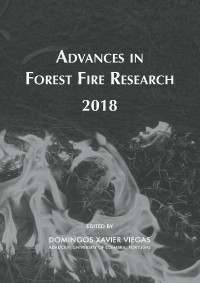Please use this identifier to cite or link to this item:
https://hdl.handle.net/10316.2/44628| Title: | Fast computational models of dynamic fire propagation using near-field techniques | Authors: | Hilton, J. E. Sharples, J. J. Sullivan, A. L. Swedosh, W. |
Keywords: | Wildfire modelling;wildfire behaviour | Issue Date: | 2018 | Publisher: | Imprensa da Universidade de Coimbra | Journal: | http://hdl.handle.net/10316.2/44517 | Abstract: | Modelling of wildfires is required for risk assessment and predicting the behavior of a potential or ongoing wildfire. Computational physics-based models can calculate the full combustion dynamics of a wildfire, but these are currently too computationally costly to be used for rapid operational predictions. As a result, many operational prediction systems for wildfires are based on rapid two-dimensional propagation algorithms which model only the outward growth of the fire perimeter. These take a fraction of the calculation time of physics-based models as factors such as the rate-of-spread of the fire are generally implemented using empirical expressions. The predictive ability of these perimeter propagation models is, however, governed by the limitations of the algorithm used. We introduce a two-dimensional perimeter propagation model that incorporates aspects of a full three-dimensional physics-based model using near-field approximations to fire-induced air flows. The model comprises a two-dimensional perimeter propagation approach with an additional near-field physics-based component allowing more complex fire behavior to be predicted rapidly enough for operational usage. We show examples of various aspects of fire behavior which can be modelled using a near-field approach that were previously difficult, or impossible, to simulate in two-dimensional perimeter propagation approaches. These include fire line interaction, wind and terrain effects, fire shape development and vortex sources. The method allows all of these aspects to be incorporated in perimeter propagation using a single computational approach. Comparison to experimental results are provided, showing an excellent fit between the model and experimental fires. The near-field approach may improve the accuracy of rapid computational models with low additional overhead, suitable for operation usage. | URI: | https://hdl.handle.net/10316.2/44628 | ISBN: | 978-989-26-16-506 (PDF) | DOI: | 10.14195/978-989-26-16-506_111 | Rights: | open access |
| Appears in Collections: | Advances in forest fire research 2018 |
Files in This Item:
| File | Description | Size | Format | |
|---|---|---|---|---|
| fast_computational_models_of_dynamic_fire.pdf | 961.46 kB | Adobe PDF |  |
Items in DSpace are protected by copyright, with all rights reserved, unless otherwise indicated.
